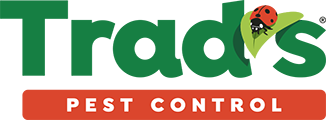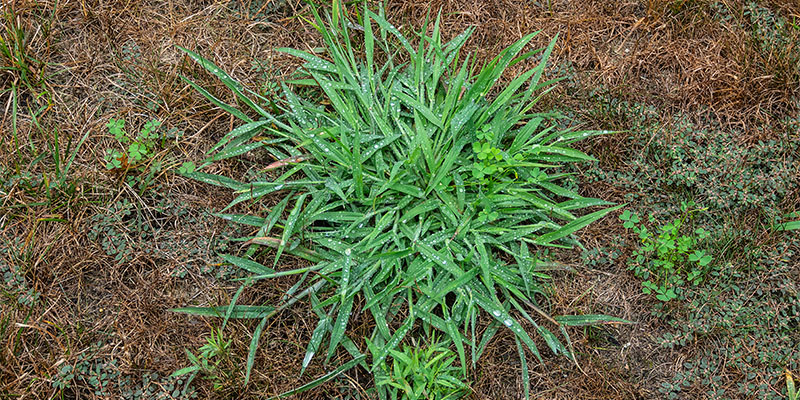Maintaining a lush and healthy lawn is a priority for many homeowners. However, the presence of crabgrass can quickly turn that dream into a nightmare. Crabgrass is a common and invasive weed that can wreak havoc on lawns, choking out desired grasses and creating unsightly patches.
Crabgrass: What It Is, the Problems It Presents, and How Homeowners Can Prevent It from Growing
In order to provide a more detailed understanding, in this article, we will delve into what crabgrass is, how it grows, why it is problematic for homeowners, methods for prevention, and the benefits of professional pest control services in dealing with this persistent weed.
What is Crabgrass?
Crabgrass (scientific name: Digitaria spp.) is an annual weed that belongs to the grass family. It is characterized by its low-growing, spreading nature and its ability to quickly take over lawns and garden beds. Crabgrass thrives in warm-season climates and is known for its ability to withstand drought and high temperatures.
Growth and Reproduction of Crabgrass
Crabgrass seeds germinate when the soil temperature reaches 55 degrees Fahrenheit. The seeds can remain dormant in the soil for several years, so even if you don’t see any crabgrass in one year, it doesn’t mean that it’s not there. Crabgrass grows best in warm, dry conditions. It can also grow in poor soil, so it can be a problem even for well-maintained lawns.
Crabgrass reproduces by seeds, and a single plant can produce thousands of seeds during its lifecycle. The seeds lie dormant in the soil until favorable conditions arise, typically in late spring or early summer. Once the soil temperature reaches around 55°F (13°C), crabgrass seeds germinate and begin to grow rapidly. The plant matures, produces more seeds, and then dies off with the onset of winter.
Problems Caused by Crabgrass
Crabgrass poses several problems for homeowners and their lawns. Firstly, its rapid growth and wide-spreading nature allow it to compete with desirable grass species, depriving them of essential nutrients, water, and sunlight. This can result in thin and patchy lawns, diminishing the overall aesthetics of the landscape.
Secondly, the prolific seeding of crabgrass ensures its persistence year after year, making it challenging to eradicate without proper intervention. Crabgrass is also problematic for homeowners for other reasons, including the following:
- It can quickly take over a lawn, making it look unsightly.
- It can crowd out your grass, making it unhealthy.
- It can produce thousands of seeds that can spread to other parts of your lawn.
Additionally, crabgrass can be difficult to control, even with herbicides. And, when it’s not proactively controlled, it will become a big problem – fast. So, now let’s take a look at how to stop crabgrass from growing in your lawn.
Preventing Crabgrass Growth
Preventing crabgrass growth is the most effective strategy for homeowners to maintain a healthy lawn. Here are some preventive measures to consider that will work if you stay consistent, especially during its natural growing season:
- Maintain proper lawn care practices. Regularly mow the lawn at the appropriate height, as taller grass shades the soil and prevents crabgrass seeds from germinating. Water deeply and infrequently, promoting deeper root growth for the desired grass while making the environment less favorable for crabgrass.
- Apply early spring pre-emergent herbicide. Spread a pre-emergent herbicide in early spring, before soil temperatures reach the threshold for crabgrass germination. This creates a barrier that prevents the seeds from sprouting.
- Improve soil health. Promote a healthy lawn by regularly aerating, de-thatching, and over-seeding to maintain a dense turf that inhibits crabgrass growth.
And, last but not least, be sure to avoid over-fertilization. Crabgrass thrives in nutrient-rich environments. Properly fertilize your lawn according to recommended guidelines to avoid excess nitrogen, which can stimulate crabgrass growth.
The Benefits of Professional Pest Control Services
While preventive measures can significantly reduce crabgrass growth, severe infestations may require the assistance of professional pest control services. Here’s how they can benefit homeowners:
Expertise and Experience
Pest control professionals have in-depth knowledge of crabgrass biology, growth patterns, and control methods. They can assess the extent of the infestation and develop a targeted plan of action.
Customized Treatment Plans
Professionals can tailor treatment plans to the specific needs of your lawn, considering factors such as grass type, severity of the infestation, and environmental considerations.
Safe and Effective Herbicides
Pest control services have access to commercial-grade herbicides that are not available to homeowners. These products are often more effective and have minimal impact on desired grasses when applied correctly.
Ongoing Maintenance and Monitoring
Professionals can provide continued monitoring and maintenance services to ensure long-term control of crabgrass and other weeds. This includes scheduled follow-up treatments and recommendations for optimal lawn care practices.
Summing It All Up
Crabgrass can be a persistent and troublesome weed for homeowners seeking a lush and healthy lawn. By understanding its growth patterns, implementing preventive measures, and enlisting the help of professional pest control services when needed, homeowners can effectively combat crabgrass infestations.
Remember, maintaining a healthy lawn requires ongoing effort, and early intervention is critical to preventing crabgrass from taking hold and damaging the beauty of your landscape.
For more information about crabgrass and how to prevent it from growing and becoming a problem, just contact us at your convenience. We can help keep your yard looking its best with professional pest management and also prevent pests from getting into your home!

